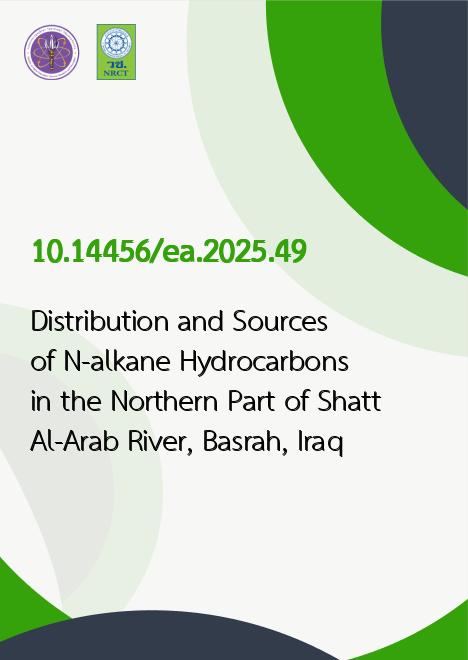
|
Distribution and Sources of N-alkane Hydrocarbons in the Northern Part of Shatt Al-Arab River, Basrah, Iraq |
|---|---|
| รหัสดีโอไอ | |
| Creator | Huda A. Abdulraoof |
| Title | Distribution and Sources of N-alkane Hydrocarbons in the Northern Part of Shatt Al-Arab River, Basrah, Iraq |
| Contributor | Huda A. Abdulraoof, Firas M. Al-khatib |
| Publisher | Thai Society of Higher Education Institutes on Environment |
| Publication Year | 2568 |
| Journal Title | EnvironmentAsia |
| Journal Vol. | 18 |
| Journal No. | 3 |
| Page no. | 35-48 |
| Keyword | Aliphatic hydrocarbons, N-alkanes, Source contribution, Shatt Al-Arab River, Basra-Iraq |
| URL Website | http://www.tshe.org/ea/index.html |
| Website title | EnvironmentAsia |
| ISSN | 1906-1714 |
| Abstract | The Shatt Al-Arab River is heavily environmentally impacted by petroleum hydrocarboncontamination from various sources of anthropogenic origin. Awareness of the distributionand seasonality of aliphatic hydrocarbons is crucial in environmental planning. This studyaimed to determine the distribution and sources of aliphatic hydrocarbons in the Shatt Al-ArabRiver; Basrah; Iraq, in summer and winter. GC-MS determination for N-alkanes (C8 - C40)was made in water samples of five stations. Concentrations were 30.06 - 44.03 μg/L withsummer showing greater concentration (with mean at 36.79 μg/L) than winter (with mean at19.34 μg/L). Significant spatial variation marked the greatest concentration in Al-Dair andAl-Shafi (summer) and Al-Zuraiji and Karma Ali (winter). There was significant seasonalchange from predominantly long-chain N-alkanes during summer (N-C29: 24.00 μg/L; N-C33:21.72 μg/L) to medium-chain N-alkanes during winter (N-C16: 16.99 μg/L; N-C14: 10.48 μg/L).Pristane/Phytane ratios were 0.52 - 0.75 in summer and highest value 3.10 winter at Karma Aliindicated predominantly petrogenic sources during summer. Carbon Preference Index valuessignificantly below 1 during all stations in both summer and winter. Biodegradation indicators(C17/Pri and C18/Phy ratios) indicated lower microbial action compared to summer in winter.This assessment confirms wide anthropogenic petroleum pollution with important spatialand temporal fluctuations, providing useful baseline information to inform environmentalmanagement of this important waterway. |